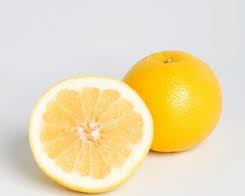10 Tips To A Greener Kitchen
 1. Use Healthy Eco-Friendly Cleaners
1. Use Healthy Eco-Friendly Cleaners
Many common household products contain toxins that could be affecting your family’s health. Buying natural safe cleaning products will help eliminate any risk of unnecessary toxins in your home.
2. Curb Paper Towel and Napkin Use
2.5 million tons of paper towels fill up landfills annually. A great solution is to buy a set of cloth rags, bar towels and fabric napkins to wash and reuse. It may be an added expense up front, but it will pay off in the end.
3. Replace Antibacterial Hand Soaps
Studies have shown that antibacterial soaps are no more effective than simple soap and water. Antibacterial soaps can lead to stronger strains of bacteria that become resistant to antibiotics.
4. Plastic— Just Say No!
The Wall Street Journal reported that Americans go through 100 billion plastic shopping bags annually and making these bags requires an estimated 12 million barrels of oil. To reduce plastic bag consumption, use alternative options such as; reuseable bags, paper bags, or even, no bag at all!
5. Replace the Sponge!
Sponges are bacteria incubators. Although a sponge seems like a great cleaning tool, it may not be the healthiest solution. Replace your sponge with dish rags!
6. Create a Recycling and Compost System
If you don’t recycle, the best way to get into the habit is to set up a simple system. Get a second trash can for inside your home and put it next to the trash can and label it “Recycling”. If you are ready to take it a step further, composting is a great way to turn your waste into soil like material that can be used in your lawn and garden.
7. Replace Nonstick Cookware
Nonstick cookware releases toxins when over high heat, has a short life-span (nonstick coating usually wears out in a year or two) and the nonstick coating can scratch off into food. Healthy alternatives include stainless steel, cast iron, copper and glass.
8. Buy In Bulk
Buying in bulk means less packaging and fewer trips to the store. You’ll also benefit from financial savings!
9. Update Kitchen Lighting
Kitchen lights are some of the most frequently used lights in the home. Energy efficient lights may be a high upfront cost but they use 75% less energy, generate 70% less heat and last up to 10 times longer.
10. Buy ENERGY STAR Appliances
If you are in the market for new appliances, choose one that has been proved more energy efficient. Many old appliances use a lot of unnecessary energy.
Hope these tips have been helpful!

